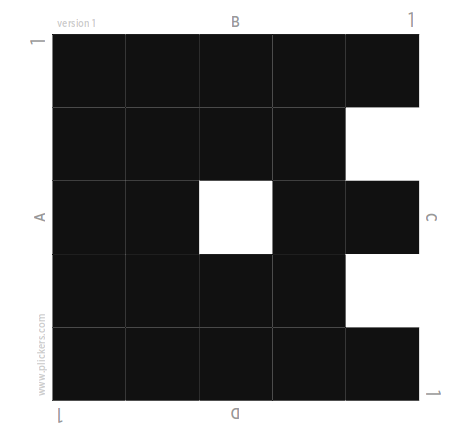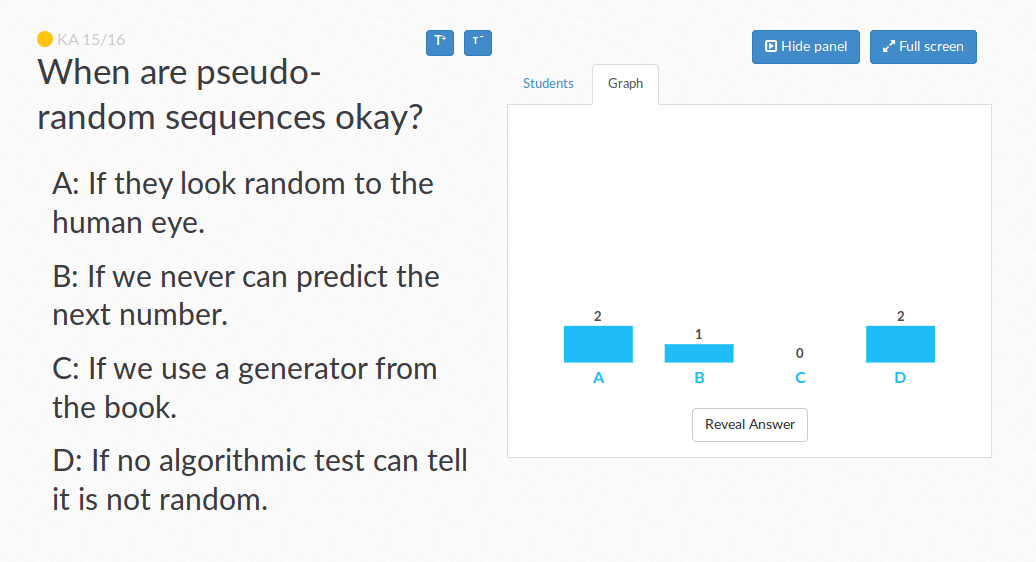Low-Tech Audience Response with Plickers
Last winter, I tried to engage a small group of students in class by using a method of active learning: audience response. The idea is that you ask reasonably scoped questions during your presentation or discussion and have the audience respond, typically using some technology that enables quick and accurate counting as well as anonymity (at least among students).
There are many implementations to choose from: proprietary or free, using dedicated hardware (often called “clickers”) or phone/web apps, multiple-choice only or with free input, and so on. I wanted to pick something that was free for both me and the students, easy to use for everybody, and came with a decent interface. I tried getting the clicker system a neighboring group has to work on my Ubuntu machine. No luck.
I stumbled over Plickers. It’s probably the most low-tech and robust audience-response system you can imagine: you select a question you have typed up before, students hold up cards with something like QR codes on them, you scan the room with your tablet or phone camera, and that is it.
You can choose to view answers by student or aggregated statistics. You manage questions and record sheets in the web application which also provides the live view you project in the classroom.
Plickers is free, and students do not need to have any special device, only an easily replaced paper card.
The technology works easily and properly; I had not a single issue after a grace period of getting used to the tool. I’d like to have support for mathematical formulae in questions and answers, but well. Note that the system is by design limited to multiple-choice questions with at most four answers; depending on what you want to do, this may be a serious dealbreaker.
My intention was to kick off discussions by asking rather open-ended questions on the literature the students were supposed to have worked through before we met. We usually went through the answers, starting with me asking: “Why (not) A?” That worked out really well; lots of teachable moments emerged. When I had no questions one week, some attendees expressed disappointment: they had gotten used to the approach quickly and liked it.
I heartily recommend using audience response to support your teaching style and engage students. I disagree with using it for assessment. I can recommend Plickers if you can live with its limitations and your class is not too large.
And, come to think of it: Since you can just hand out Plickers cards and get started, this system has the potential to spice up any presentation. Do you dare using audience response at a conference?

